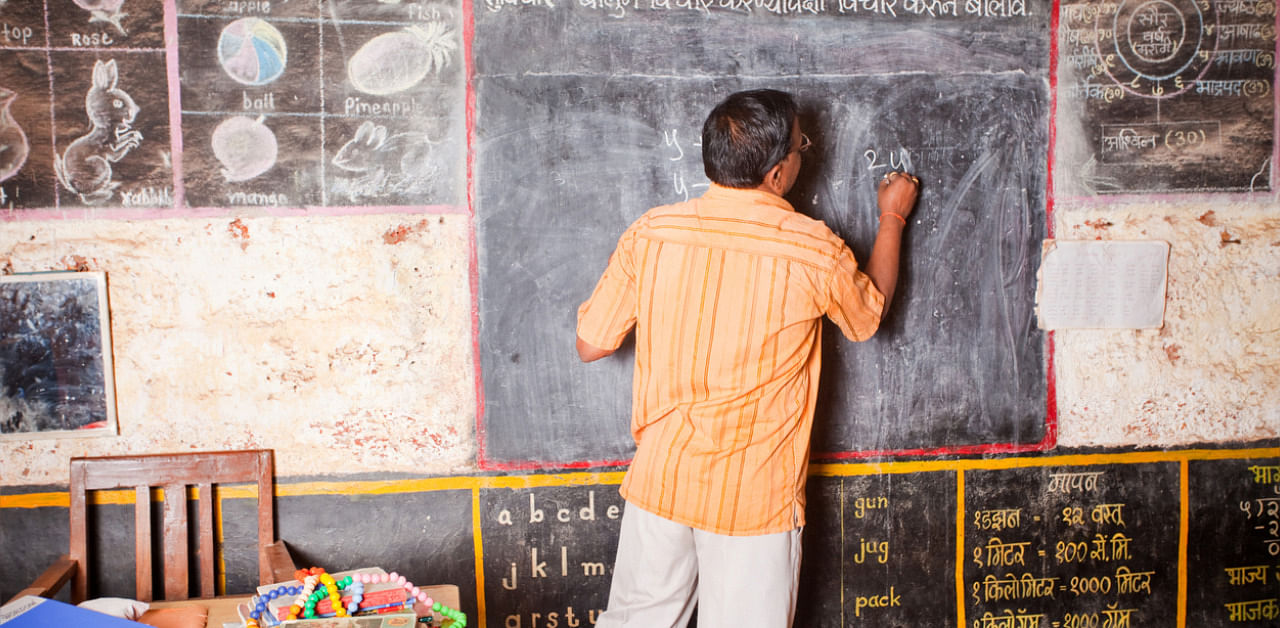
At its most fundamental, teaching ought to be about a process of intellectual exchange, about transferring ideas from one mind to another.
The India of bygone times, which is promptly repurposed for political interests today, was not only the intellectual wellspring of the world, but comprised a comprehensive “ecosystem” of teaching and learning, as author Sahana Singh has argued.
Ashramas, spread all over the country and attracting scholars from far and wide, were set up by gurus possessing specialised insight in different fields. For a student to be sufficiently enriched, travelling was imperative, as the process of education involved accumulating knowledge from various pockets of the country by not only mastering texts but also observing lived realities.
What, then, happened to this sublime educational infrastructure of ancient India?
In short, it was brutally dismantled – by the violent debauchery of invading tribes, by the relative complacency of the Mughals in ignoring the intellectual legacy of India, and by the insidiousness of the British in creating an imperial setup of learning catering to colonial interests.
Our unwillingness to transform the education system post independence in 1947 has resulted in the Indian classrooms of today, where students mostly learn from teachers what, rather than how, to think.
Karthik Muralidharan, one of India’s leading policy experts on education, believes that any education system has three main purposes – equipping the students with skills, facilitating their cultural development and socialisation, and sorting – the filtration of students based on their exam performances, which, in the Indian context, relies disproportionately on rote-learning.
It is this third purpose that the Indian system has become obsessed with, setting off a rat-race where grades have emerged as the be-all and end-all.
The fact that such an obsession cripples students is now common knowledge, an article of hopeless inevitability, to be passed from generation to generation, in keeping with the consequent gulf between education and employability.
Students, however, are not the only stakeholders within a classroom.
What of the teachers, and the art of teaching? How have they become a systemic casualty in a country that once held them in the highest regard?
The answer starts with poor pay (often leading to absenteeism) as the first hurdle to teaching in India. Let alone those who are hired on temporary contracts or on a gig-basis, even experienced teachers often rely on private tuitions and coaching centres outside formal institutions to make ends meet or earn a dignified salary. Teachers who make a fortune in some of the elite schools and universities represent a minuscule minority of the masses.
Then there is the alarming teacher-student ratio, which makes it impossible for a single teacher to take into account the needs of every single student in the class. As a matter of course, the teacher ends up concentrating on those who appear to pay attention, while the system dismisses the rest as shirkers.
Compounding the first two problems is the dearth of proper training schemes for teachers, which means that under-qualified staff are hired frequently, and sometimes, even among considerably qualified academicians, there is little understanding of how to connect with students without spoon-feeding them.
But, above all, is the underlying dynamic of interaction that stifles the spirit of teaching in India by discouraging free thinking and open debate.
This dynamic is built around the conception of the teacher as the key constituent of a monologue, not a conversation.
Most classes, be it in primary school or universities, are built around the teacher lecturing for close to an hour, to be interjected only occasionally, summarising information that is already ensconced in hastily drawn reading lists belonging to inadequately engineered syllabi.
The impact is the creation of a power structure where the teacher assumes a position of almost uncontestable authority. Instead of being an enabler to the learning process, the teacher indoctrinates, unable to factor in the multiple requirements that a class full of varyingly competent students would naturally demand.
Such a problem becomes even more complicated in institutions where students lack foundational literacy and numeracy (a massive issue in India), and are consistently playing catch up with a teacher who is obliged to complete the syllabi.
As a result, creativity, critical thinking, and collaboration – the skills most vital for our current times- cannot flourish in Indian classrooms because teachers are dispossessed of the environment within which to unleash these attributes.
By reducing teaching to a one-way-street policed by the need to optimise grades, Indian education leaves no room for the kind of back and forth debates and discussions that are necessary for constructing the personalities of students.
While it is true that India has produced several outstanding teachers, who have become role models and guiding lights for their students, it is also true that such exceptional men and women remain outliers, and it is only through addressing systemic issues that they can become the norm.
The key to unlocking learning in India is to make education – as in ancient India – a symbiotic process, one driven by intellectual exchange, and not the reductive mechanisation of skills that has run rampant for so long.
Once the focus of teaching is transformed, there should be a manifold increase in great teachers in India, who would finally come to excel because of the system, and not in spite of it.
(Priyam Marik is a freelance journalist writing on politics, culture, and sport)
Disclaimer: The views expressed above are the author’s own. They do not necessarily reflect the views of DH.